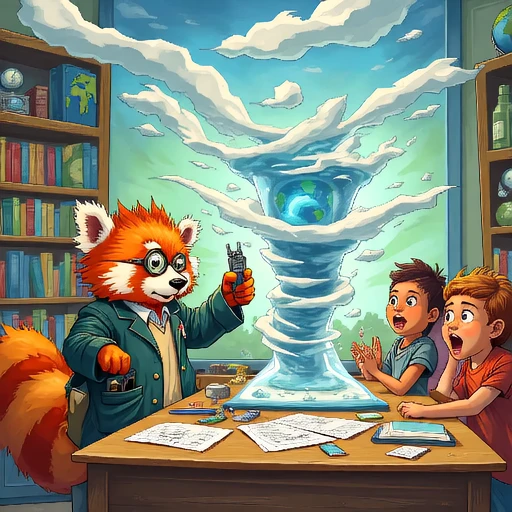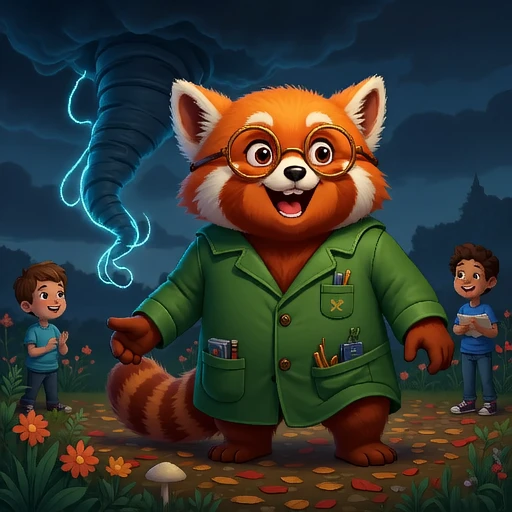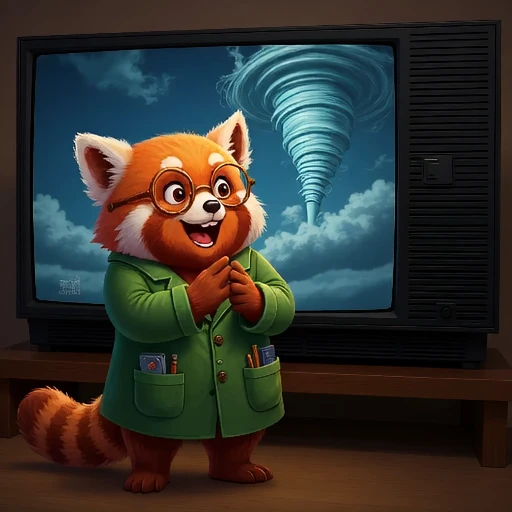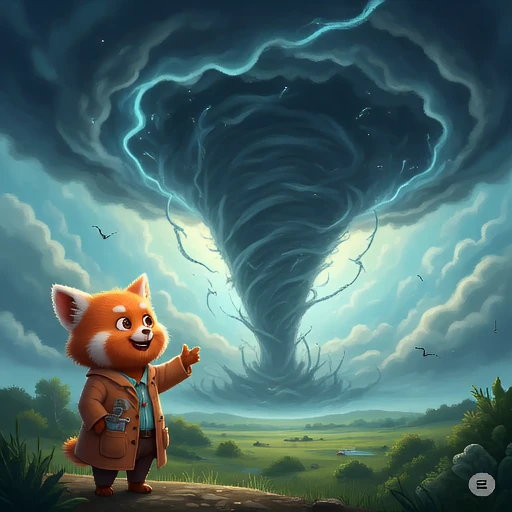
On mobile devices, you may need to tap play for each page due to browser restrictions.

Professor Pip stood in front of a big, colorful poster of a tornado. He adjusted his glasses and said, "Today, we're going to learn about what makes tornadoes spin!"

He pointed to a drawing of the Earth and the sun. "Tornadoes start with the sun, which heats up the Earth unevenly," he explained.

Picking up a small fan, Professor Pip turned it on and held it near a bowl of warm water. "Warm air rises from the ground because it's lighter than cold air," he said, watching steam rise.

Next, he placed a block of ice next to the bowl. "When this warm air meets colder air, it starts to move around," he continued, making swirling motions with his hands.

Professor Pip then took out two different colored scarves, holding one in each hand. "Imagine these scarves are warm and cold air," he said, twirling them together so they twisted around each other.

He grabbed a spinning globe and spun it quickly. "The Earth is always spinning, which makes the air twist even more," Professor Pip explained with a smile.

"Now, all this twisting air starts to pull together, forming a spinning column," he said, using his arms to demonstrate a narrowing spiral. "This is the beginning of a tornado!"

Professor Pip set up a small experiment with a lamp and some spinning disks. "As the column spins faster and stretches, it becomes stronger and can cause a lot of wind," he said, pointing to the spinning disks that mimicked a tornado's movement.

Finally, he showed a video of a real tornado, its powerful winds whirling around. "When conditions are just right, the spinning air touches the ground and becomes a tornado," Professor Pip concluded, clapping his hands with excitement.

"Remember, tornadoes are fascinating to learn about, but they can be very dangerous," Professor Pip reminded everyone. "Always listen to weather warnings and stay safe!"